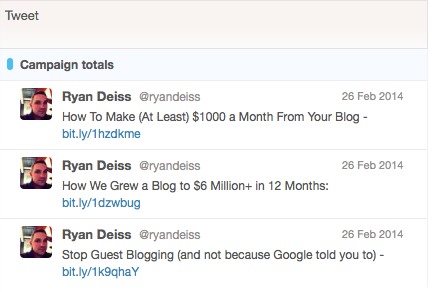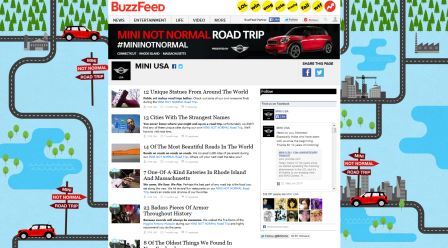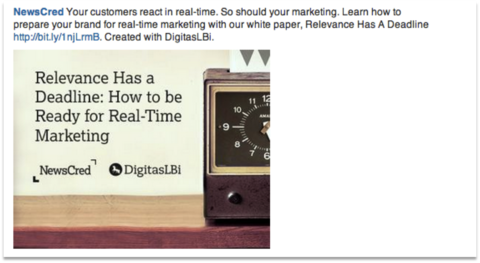
- In 2011, it didn’t exist as a paid media channel.
- In 2013, native advertising is a $3.7 billion media industry, 56% larger than social display ads (source: eMarketer),
But, for all the money being poured into native advertising, does it generates revenue for the businesses that use it? Does it “Show Me the Money” to advertisers and marketers?
Here are 4 native advertising case studies that prove ROI.
- DIGITAL MARKETER: has an offering called Authority ROI. It is a course designed to teach bloggers how to make money for their blogs by treating them like media properties They use Twitter’s Promoted Tweets for this campaign. Because the ads are “native”, they look just like any other tweet. There’s no mention of a product. There’s no selling. They build three “native worthy” landing pages with informative articles. The ROI of Twitter Promoted Tweets is +198% based on the :
- 359K Impressions
- 9.71K Engagements (this benefits us on Twitter well beyond this campaign)
- $0.27 Cost Per Engagement
- $2,663 Spent
- $7,937.85 in Revenue
http://youtu.be/Ys0WVOPmA6g
- GE: is showcasing young innovators on the Jimmy Fallon show in a native property called “GE Fallonvention.” As GE’s executive director of global brand marketing, Linda Boff, explained, GE is “leaning in” to native advertising more and more. The multinational conglomerate has been one of the early adopters of the “brand as content creator” trend, using social media platforms and online media partnerships to establish itself as more than a brand that makes big machines, but rather a brand that cultivates and supports a culture of innovation and invention. “Great content can come from a lot of different places, but funnily enough, it seems to be traditional media can get a little more attention when it comes to native,” she said. The first segment has gotten 333,106 views on YouTube so far, and, according to Boff, the video completion rate is 92 percent.
MINI USA: has a program with BuzzFeed since 2012. BuzzFeed COO Jon Steinberg explains the objective on SlideShare: “The primary goals of MINI’s collaboration with BuzzFeed were to continue broadening awareness for the brand slogan ‘Not Normal’, emotionally engage with its audience, and enhance perception of MINI as a fun brand.” On BuzzFeed alone, the first articles has more than 100,000 likes, is shared 35,000 times and were tweeted 7,000 times. As a result of the native ad campaign, the number of those who would consider buying a MINI as their next car has increased by 35.8%. The statement ‘MINI is a brand that stands for fun’ was supported by over 50% more test participants at the end of the campaign.
- NEWS CRED: is a B2B SaaS company that use LinkedIn Sponsored Updates, other native advertising and Google Adwords. They are looking for these vehicles to drive: 1) Names: At the earliest stage of the sales cycle, they identify names and contact info of prospects, 2) Leads: Names converts to a lead when the person expresses real sales interest, 3) Opportunities: Leads convert to opportunities when the have successful meetings with leads who show intent to buy and 4) Closed Won Deals: Opportunities convert to closed won deals when contracts have been signed. In terms of ROI, for every $1 spent on LinkedIn Updates, News Cred earned $17.60 in revenue; for other native advertising, the ROI was $1 returned $14.60 and for Google Adwords the ROI was $1 returned $3.10.
If you’re interested in native advertising and ROI, the IAB is conducting a Native Advertising eCourse beginning August 5th. It consists of three online course of one hour each.
Do these case studies convince you of the ROI of native advertising? Do they tell you, for native advertising to “Show Me the Money,” marketers has to spend money or have a strategy for how that money makes money?







